Fate Dissolved Defunct 1988 (1988) | Founded 1816 (1816) | |
 | ||
Products British military rifles, muskets, swords | ||
The royal small arms factory a short history
The Royal Small Arms Factory (RSAF) was a UK government-owned rifle factory in the London Borough of Enfield in an area generally known as the Lea Valley. The factory produced British military rifles, muskets and swords from 1816. It closed in 1988, but some of its work was transferred to other sites.
Contents
- The royal small arms factory a short history
- Foundation
- The Crimean War
- 20th century
- The significance of RSAF Enfield
- Weapons designed built at RSAF Enfield
- Closure and reuse of the site
- Community
- References
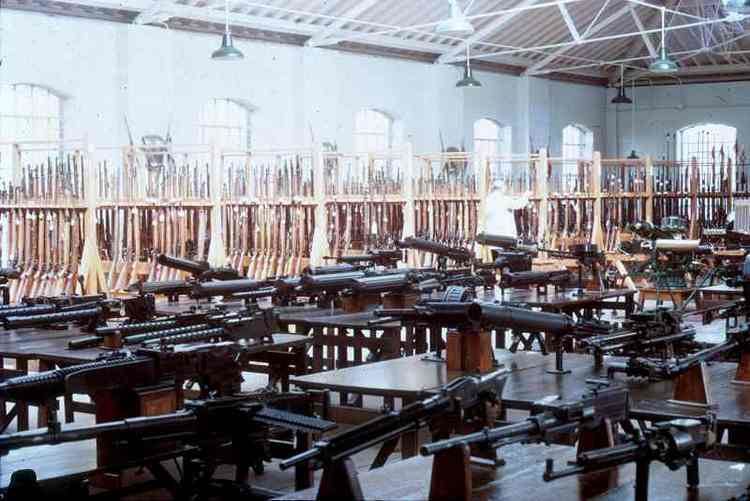
Foundation

The factory was located at Enfield Lock on a marshy island bordered by the River Lea and the River Lee Navigation. It was built on the instructions of the Board of Ordnance near the end of the Napoleonic War. The land was acquired in 1812 and the factory completed by 1816. The site had the advantages of water-power to drive the machinery and the River Lee Navigation for the transportation by barge of raw materials and finished weapons to the River Thames, 15 miles away to be loaded onto sailing ships. Neighbouring farmland was acquired to become a restricted area to test ordnance from the Royal Gunpowder Mill. The RSAF was originally all situated on the east side of the Lea, in the county of Essex in Waltham Abbey parish, Sewardstone hamlet. The course of the river was diverted during the life of the factory, and part of the site then fell in Enfield parish. Local boundary changes initiated by SI 1993/1141 after it closed transferred the site entirely from Epping Forest (district) to the London Borough of Enfield.
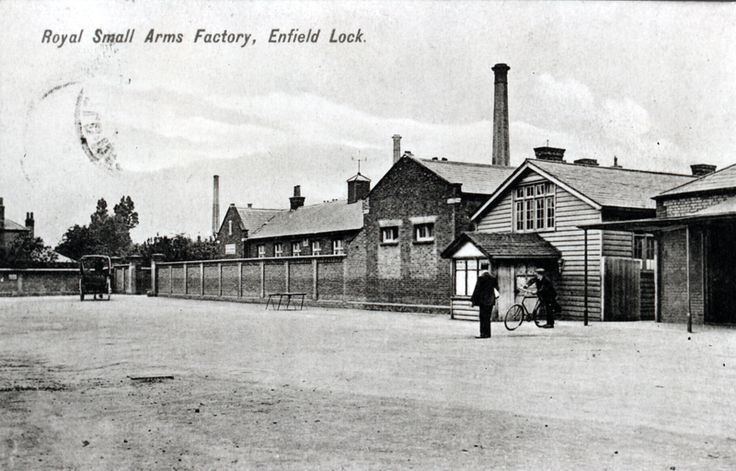
The original ambitious plans by Captain John By included three mills. Later, the engineer John Rennie recommended the construction of a navigable leat. The leat was made, although only one mill with two waterwheels was completed.
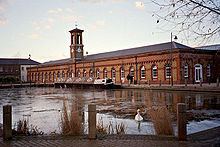
In 1816 the barrel branch was transferred from Lewisham; and by 1818 the lock and finishing branches had been moved to the site, enabling the closure of the Lewisham factory. A sword-making department was set up in 1823.
The Crimean War
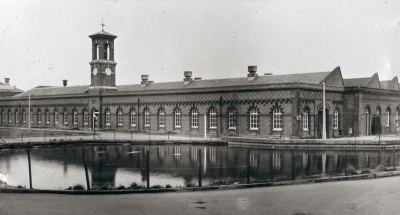
The factory fought off the threat of closure in 1831; and remained quite modest in size until the Crimean War of 1853/1856, which resulted in vastly increased production.
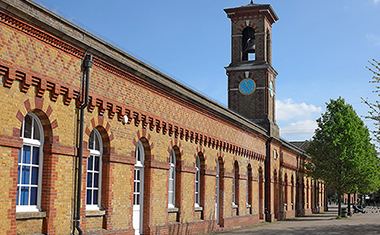
By 1856 a machine shop was built on American mass-production lines, using American machinery powered by steam engines. The shop was based on a design by John Anderson and built by the Royal Engineers. The workforce increased to 1000, and by 1860 an average of 1,744 rifles were produced per week.
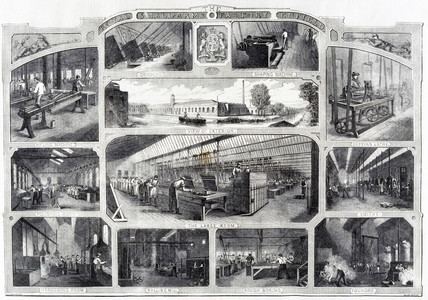
In 1866 another major expansion took place, when the watermill gave way to steampower. The total number of steam engines grew to sixteen; and by 1887 there were 2,400 employees.
Production of the new model rifle designed by James Paris Lee began in 1889. The famous Lee–Enfield rifle was designed in 1895.
20th century
The factory expanded again in World War I; and in World War II. Two other Royal Ordnance Factories were set up in World War II to manufacture rifles designed at RSAF Enfield, and hence to increase arms output in areas less vulnerable to bombing: ROF Fazakerley and ROF Maltby. Both of these have long been closed.
Decline set in after World War II; and in 1963 half the site was closed.
The Royal Small Arms Factory was privatised in 1984 along with a number of Royal Ordnance Factories to become part of Royal Ordnance Plc; and was later bought by British Aerospace (BAe). They closed the site in 1988.
The significance of RSAF Enfield
The factory was set up because of disappointment with the poor quality and high cost of the existing British weapons used in the Napoleonic Wars. At this time in Britain, they were built as individual gun components mainly in the Gun Quarter, Birmingham by a number of independent manufacturers and then hand-assembled to produce rifles. These component makers eventually combined to become the Birmingham Small Arms Company. The Enfield factory was intended to improve the quality and to drive down costs.
Weapons designed / built at RSAF Enfield
Almost all the weapons in which the Royal Small Arms Factory had a hand in design or production carry either the word Enfield or the letters EN in their name;
For weapons manufactured at Enfield before 1853, see British military rifles#Early Enfield rifles
The RSAF, Enfield, was famous for its Pattern Room which was a collection, or master set, of every weapon made at RSAF Enfield. After closure this collection was moved to ROF Nottingham; which has since closed. The collection is now held at the Royal Armouries Museum, Leeds.
Closure and reuse of the site
Local government boundary changes meant that the majority of the site was now within the London Borough of Enfield. The necessary outline planning permissions were obtained for site redevelopment; making closure of the site attractive to its new owners.
Closure was announced on 12 August 1987, shortly after privatisation as Royal Ordnance, and the site closed in 1988; the machinery was auctioned off in November 1988. BAe then formed a joint venture with the property company Trafalgar House to redevelop the site.
The majority of the site is now covered by a large housing development called Enfield Island Village.The original machine shop frontage and the older part of the rear structure has been retained and was converted into workshops and retail units by the Enfield Enterprise Agency, making use of European Union (ERDF) funding. The buildings also house the RSAF Interpretation centre which can be viewed by appointment only.
The Rifles public house originally known as the Royal Small Arms Tavern was compulsorily purchased by the government at the time of the First World War. It closed down in 2004 after a large fire damaged the structure. The partially destroyed building is currently standing (2015). Other pubs which had been built for local works remain standing including The Greyhound just west of the River Lea and The Plough in Sewardstone.
Community
By 1895, the community had long had its own school (demolished), but it now also had a church (demolished in the 1920s), police station—with three sergeants and nine constables in 1902—and a fire brigade which was manned by one professional and 32 amateurs. Housing conditions in the mid 19th century were poor in the area. The extant Government Row a terrace of cottages was built between two watercourses to house some of the factory's workers. Several public houses were opened close to the complex including The Royal Small Arms Tavern renamed Rifles in the late 20th century, The Greyhound, Ordnance Arms and The Plough with only the Greyhound surviving today (2009) and the brewers Truman & Hanbury became responsible for the catering within the factory. There is still evidence of the factory to be found in the immediate area such as pill boxes, bridges and original buildings on the site such as the police house.
